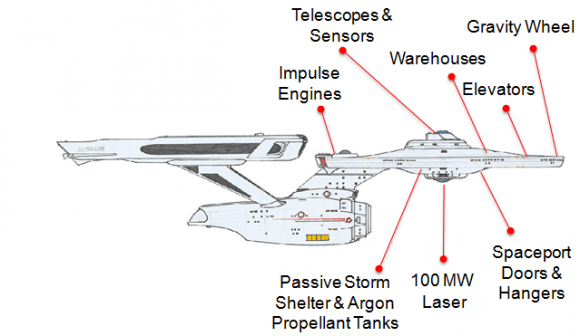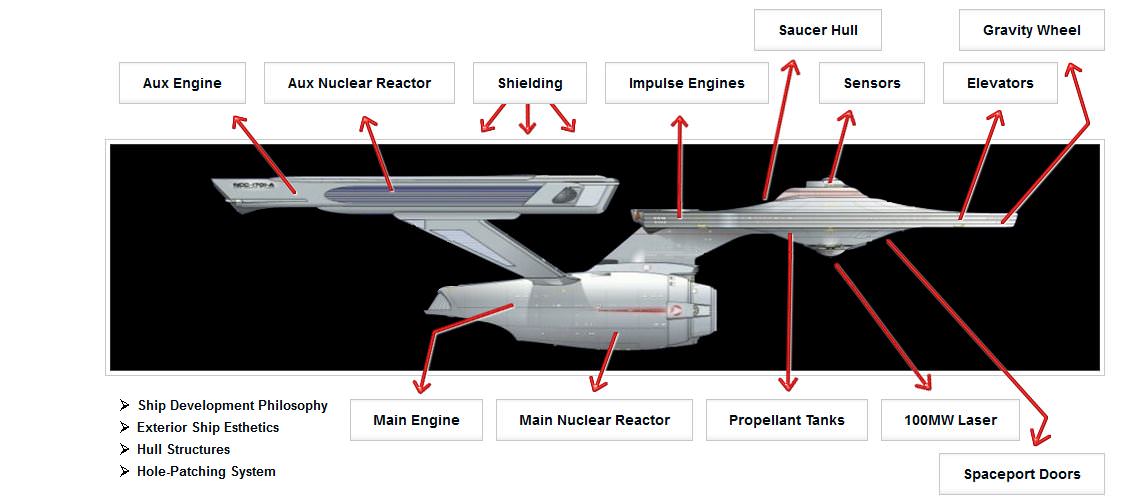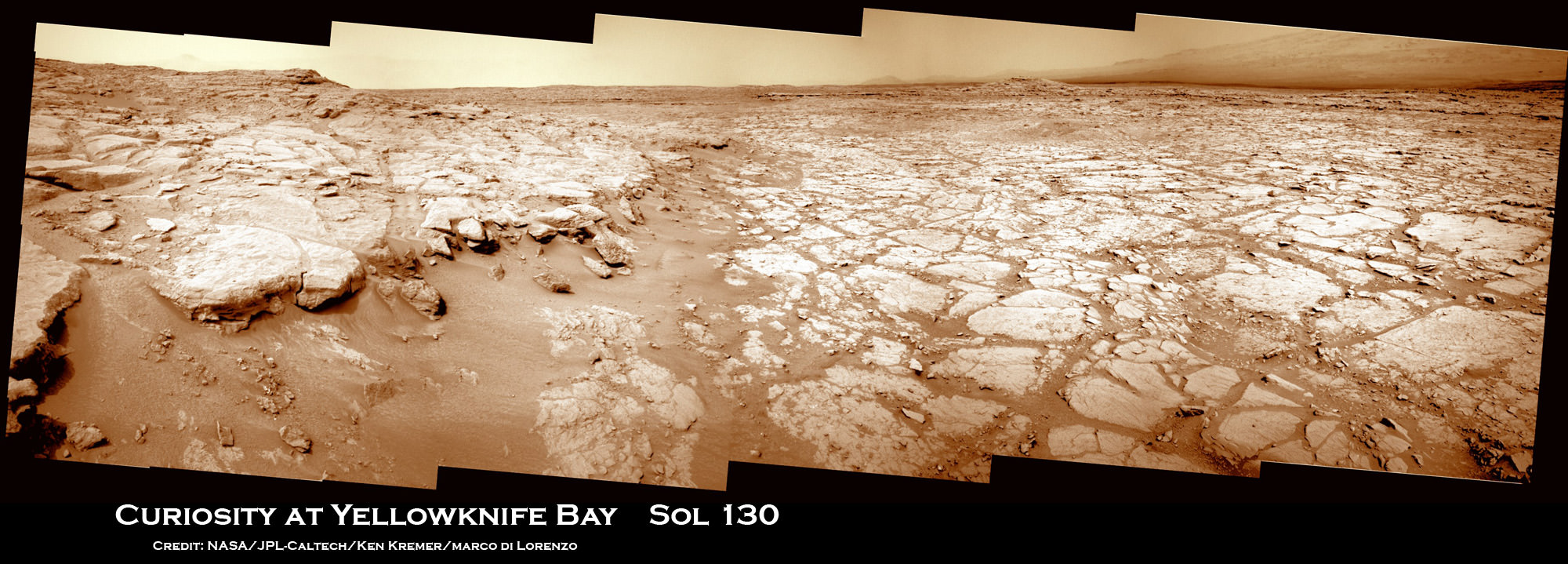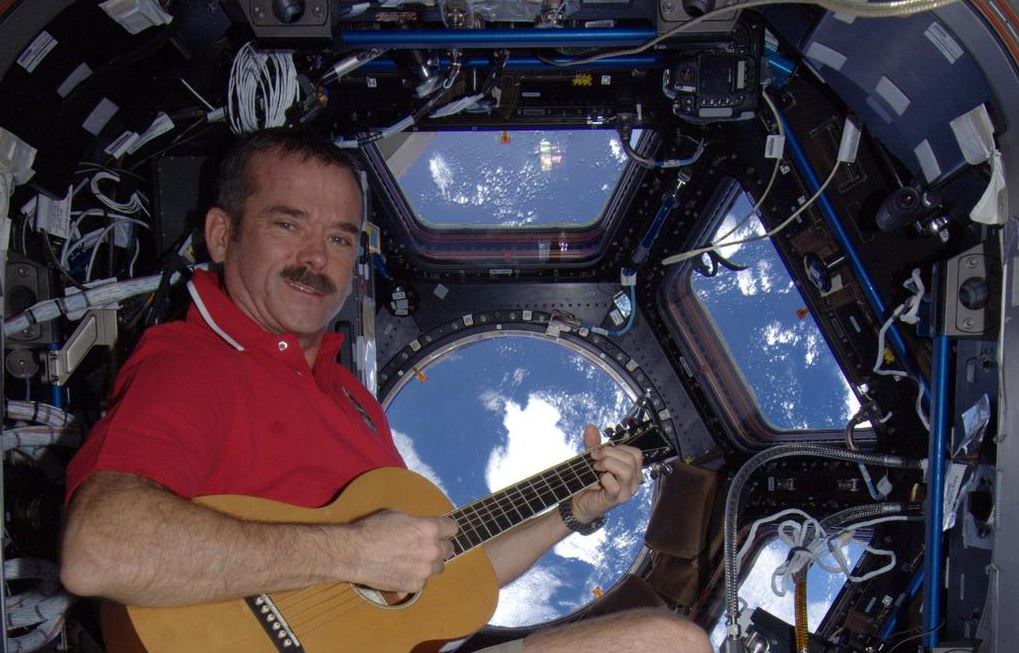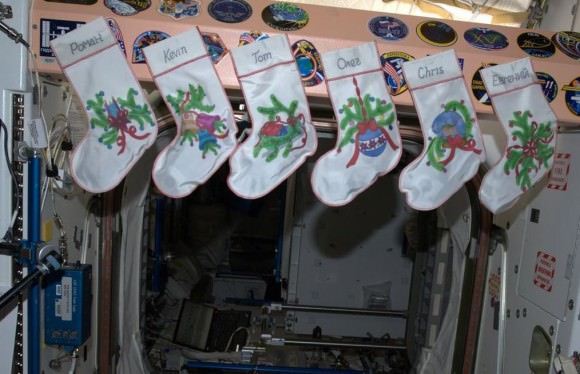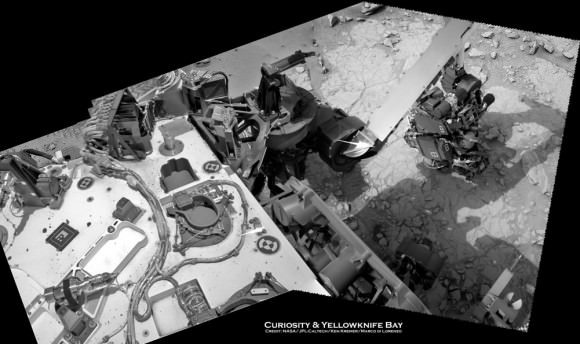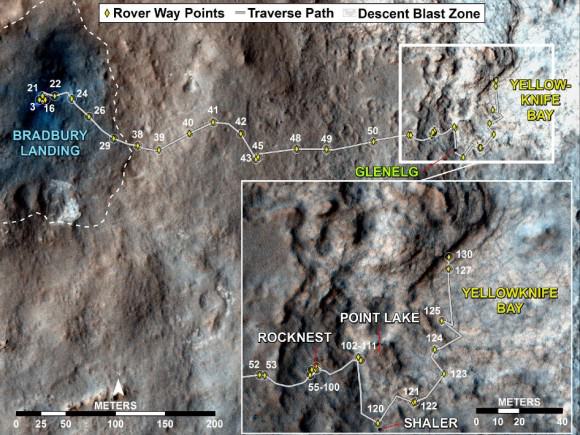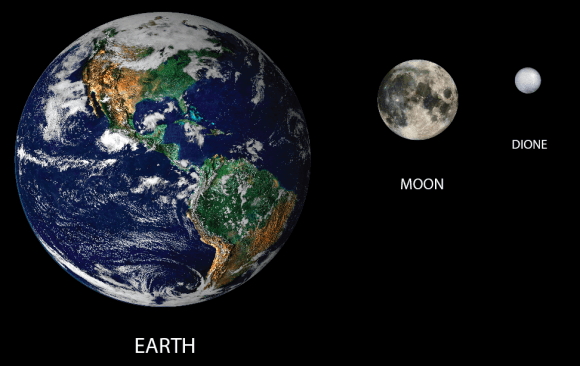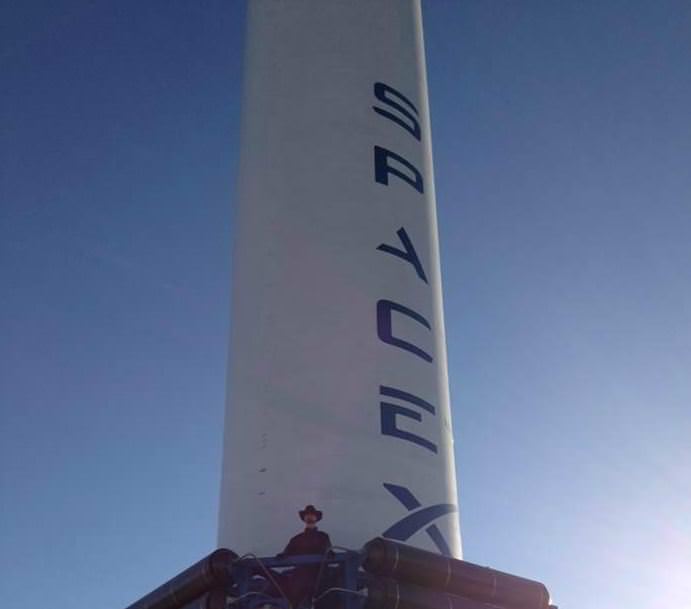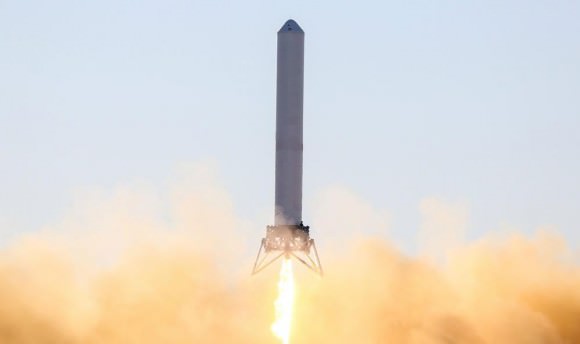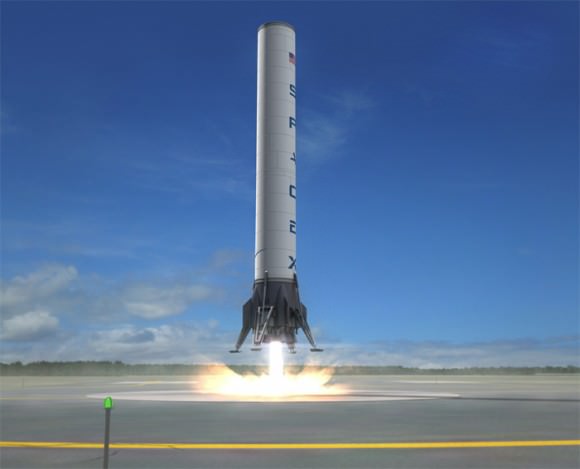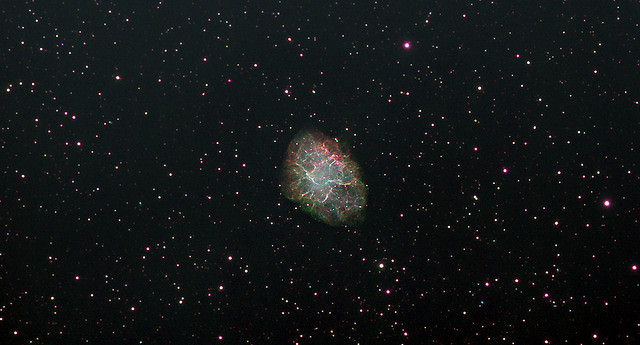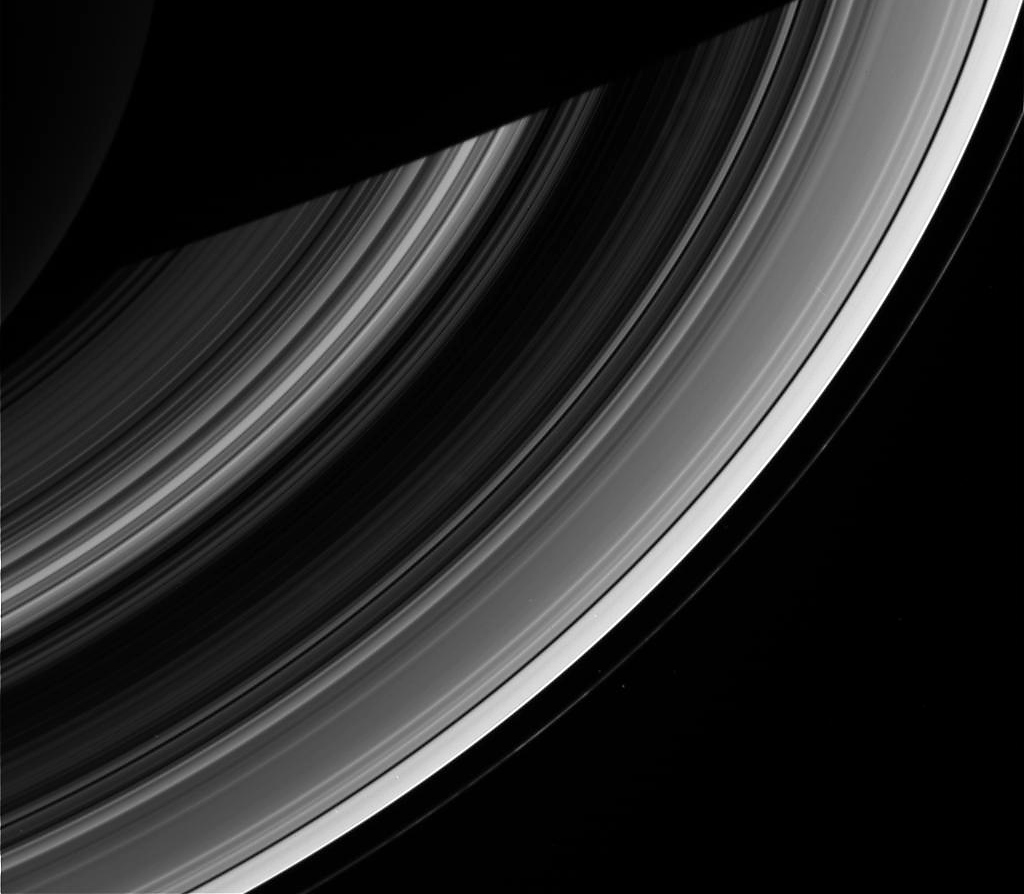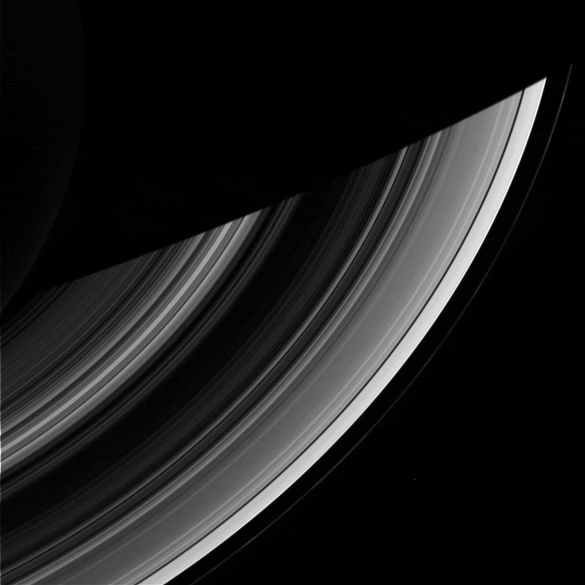Image caption: Orion EFT-1 crew cabin construction ongoing inside the Structural Assembly Jig at the Operations and Checkout Building (O & C) at the Kennedy Space Center (KSC). This is the inaugural space-bound Orion vehicle due to blastoff from Florida in September 2014 atop a Delta 4 Heavy rocket. Credit: Ken Kremer
NASA is thrusting forward and making steady progress toward launch of the first space-bound Orion crew capsule -designed to carry astronauts to deep space. The agency aims for a Florida blastoff of the uncrewed Exploration Flight Test-1 mission (EFT-1) in September 2014 – some 20 months from now – NASA officials told Universe Today.
I recently toured the Orion spacecraft up close during an exclusive follow-up visit to check the work in progress inside the cavernous manufacturing assembly facility in the Operations and Checkout Building (O & C) at the Kennedy Space Center (KSC). Vehicle assemblage is run under the auspices of prime contractor Lockheed Martin Space Systems Corporation.
A lot of hardware built by contractors and subcontractors from all across the U.S. is now arriving at KSC and being integrated with the EFT-1 crew module (CM), said Jules Schneider, Orion Project manager for Lockheed Martin at KSC, during an interview with Universe Today beside the spacecraft at KSC.
“Everyone is very excited to be working on the Orion. We have a lot of work to do. It’s a marathon not a sprint to build and test the vehicle,” Schneider explained to me.
My last inspection of the Orion was at the official KSC unveiling ceremony on 2 July 2012 (see story here). The welded, bare bones olive green colored Orion shell had just arrived at KSC from NASA’s Michoud facility in New Orleans. Since then, Lockheed and United Space Alliance (USA) technicians have made significant progress outfitting the craft.
Workers were busily installing avionics, wiring, instrumentation and electrical components as the crew module was clamped in place inside the Structural Assembly Jig during my follow-up tour. The Jig has multiple degrees of freedom to move the capsule and ease assembly work.
“Since July and to the end of 2012 our primary focus is finishing the structural assembly of the crew module,” said Schneider.
“Simultaneously the service module structural assembly is also ongoing. That includes all the mechanical assembly inside and out on the primary structure and all the secondary structure including the bracketry. We are putting in the windows and gussets, installing the forward bay structure leading to the crew tunnel, and the aft end CM to SM mechanism components. We are also installing secondary structures like mounting brackets for subsystem components like avionics boxes and thruster pods as parts roll in here.”
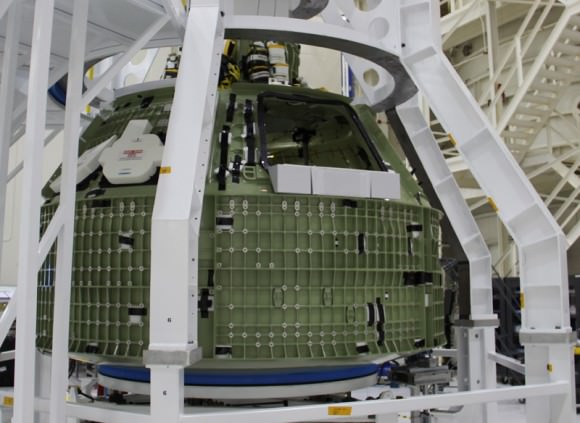
Image caption: Window and bracket installation on the Orion EFT-1 crew module at KSC. Credit: Ken Kremer
“A major part of what we are doing right now is we are installing a lot of harnessing and test instrumentation including alot of strain gauges, accelerometers, thermocouples and other gauges to give us data, since that’s what this flight is all about – this is a test article for a test flight.
“There is a huge amount of electrical harnesses that have to be hooked up and installed and soldered to the different instruments. There is a lot of unique wiring for ground testing, flight testing and the harnesses that will be installed later along with the plumbing. We are still in a very early stage of assembly and it involves alot of very fine work,” Schneider elaborated. Ground test instrumentation and strain gauges are installed internally and externally to measure stress on the capsule.
Construction of the Orion service module is also moving along well inside the SM Assembly Jig at an adjacent work station. The SM engines will be mass simulators, not functional for the test flight.
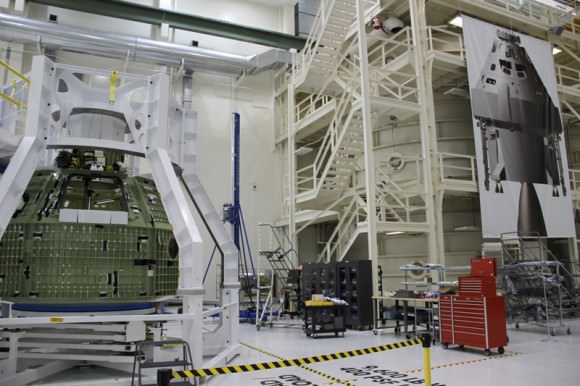
Image caption: Orion EFT-1 crew cabin and full scale mural showing Orion Crew Module atop Servivce Module inside the O & C Building at the Kennedy Space Center, Florida. Credit: Ken Kremer
The European Space Agency (ESA) has been assigned the task of building the fully functional SM to be launched in 2017 on NASA’s new SLS rocket on a test flight to the moon and back.
Although Orion’s construction is proceeding apace, there was a significant issue during recent proof pressure testing at the O & C when the vehicle sustained three cracks in the aft bulkhead of the lower half of the Orion pressure vessel.
“The cracks did not penetrate the pressure vessel skin, and the structure was holding pressure after the anomaly occurred,” Brandi Dean, a NASA Public Affairs Officer told me. “The failure occurred at 21.6 psi. Full proof is 23.7 psi.”
“A team composed of Lockheed Martin and NASA engineers have removed the components that sustained the cracks and are developing options for repair work. Portions of the cracked surface were removed and evaluated, letting the team eliminate problems such as material contamination, manufacturing issues and preexisting defects from the fault tree. The cracks are in three adjacent, radial ribs of this integrally machined, aluminum bulkhead,” Dean stated.
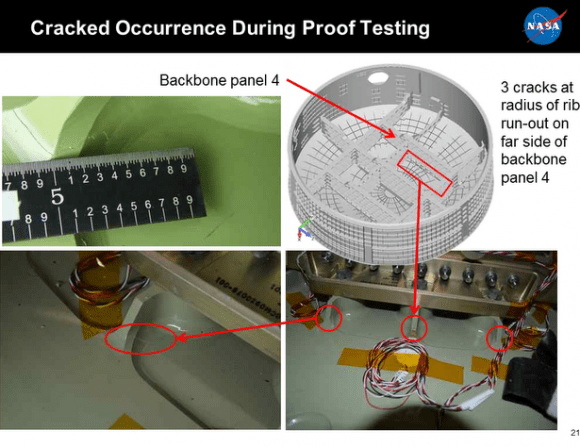
Image caption: NASA graphic of 3 cracks discovered during recent proof pressure testing. Credit: NASA
The repairs will be subjected to rigorous testing to confirm their efficacy as part of the previously scheduled EFT-1 test regimen.
A great deal of work is planned over the next few months including a parachute drop test just completed this week and more parachute tests in February 2013. The heat shield skin and its skeleton are being manufactured at a Lockheed facility in Denver, Colorado and shipped to KSC. They are due to be attached in January 2013 using a specialized tool.
“In March 2013, we’ll power up the crew module at Kennedy for the first time,” said Dean.
Orion will soar to space atop a mammoth Delta IV Heavy booster rocket from Launch Complex 37 at Cape Canaveral Air Force Station in Florida. Construction and assembly of the triple barreled Delta IV Heavy is the pacing item upon which the launch date hinges, NASA officials informed me.
Following the forced retirement of NASA’s space shuttles, the United Launch Alliance Delta IV Heavy is now the most powerful booster in the US arsenal and heretofore has been used to launch classified military satellites. Other than a specialized payload fairing built for Orion, the rocket will be virtually identical to the one that boosted a super secret U.S. National Reconnaissance Office (NRO) spy satellite to orbit on June 29, 2012 (see my launch story here).
Orion will fly in an unmanned configuration during the EFT-1 test flight and orbit the Earth two times – reaching an altitude of 3,600 miles which is 15 times farther than the International Space Station’s orbital position. The primary objective is to test the performance of Orion’s heat shield at the high speeds and searing temperatures generated during a return from deep space like those last experienced in the 1970’s by the Apollo moon landing astronauts.
The EFT-1 flight is not the end of the road for this Orion capsule.
“Following the EFT-1 flight, the Orion capsule will be refurbished and reflown for the high altitude abort test, according to the current plan which could change depending on many factors including the budget,” explained Schneider.
“NASA will keep trying to do ‘cool’ stuff”, Bill Gerstenmaier, the NASA Associate Administrator for Human Space Flight, told me.
Stay tuned – Everything regarding human and robotic spaceflight depends on NASA’s precarious budget outlook !
Ken Kremer
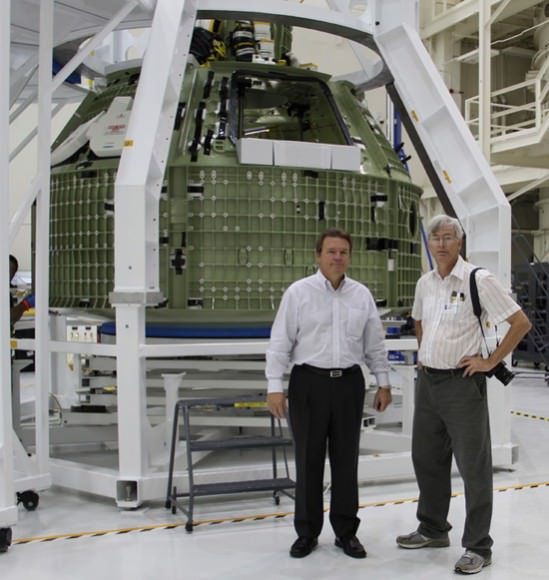
Image caption: Orion EFT-1 crew cabin assemblage inside the Structural Assembly Jig at the Operations and Checkout Building (O & C) at the Kennedy Space Center (KSC); Jules Schneider, Orion Project Manager for Lockheed Martin and Ken Kremer. Credit: Ken Kremer
